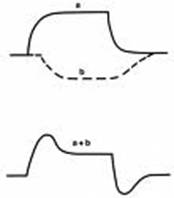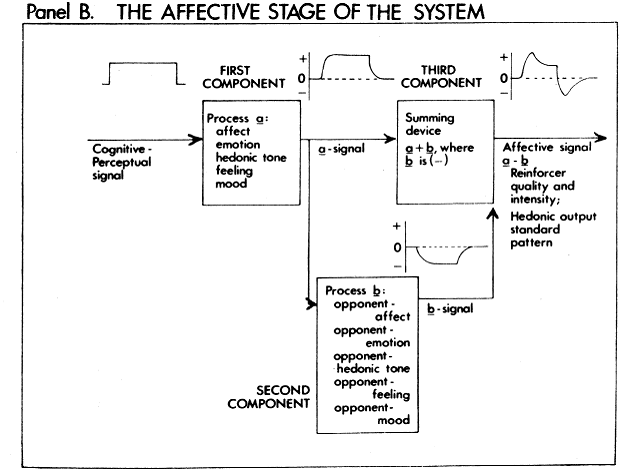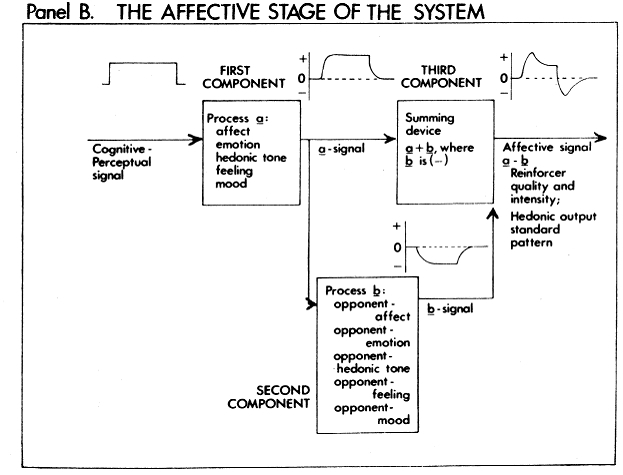[From Bill Powers (2009.11.21.0645 MDT)]
There have been a few recent offline discussions of emotion, with
references to Plutchik’s taxonomy and Solomon’s “opponent
process” “theory” of emotion which is really just another
taxonomy. I was reminded of another sort of taxonomy and looked it up on
the web (of course):
http://en.wikipedia.org/wiki/Trobriand_Islands
"Particularly interesting and unique to the Trobriand Islands
are the linguistic aspect of the indigenous language,
Kilivila. Drawing upon earlier work by
Bronislaw
Malinowski,
Dorothy D.
Lee’s scholarly writings refer to “non-lineal codifications of
reality.” In such a linguistic system, the concept of linear
progress of time, geometric shapes, and even conventional methods of
description are lost altogether or altered. In her example of a specific
indigenous yam, Lee explains that when the yam moves from a state of
sprouting to ripeness to over-ripeness, the name for each object in a
specific state changes entirely. This is because the description of the
object at different states of development are perceived as wholly
different objects [what horrible English]*. Ripeness is considered
a “defining ingredient” and thus once it becomes over-ripe, it
is a new object altogether. The same perception pertains to time and
geometric shapes."*I have seen a passage from Malinowski in which he details over 100
words for yams which, as Lee says, are treated as if each one is a new
object, though we would say it is really just the same vegetable in
different states of growth, preparation, tastiness, health, and
appearance. We reduce the huge taxonomy to a few independent dimensions
of perception, from which a continuum of different combinations could be
derived and any number of arbitrary taxonomic categories could be
created, if we saw any point in doing that.
We, of course, do the same thing, only when we do it we don’t refer to it
as a primitive, strange, or excessive sort of behavior. Consider the
names of colors. Is there really an independently-existing unique color
such as chartreuse? Is a point on the color chart given that name really
a new object altogether relative to the color one millimeter away from it
in any direction on the chart? Or are we, as we would say the Trobriand
Islanders are, simply dividing a continuum into arbitrary areas and
saying that each area is something unique and different? What about the
notes of a musical scale called do re mi etc, or the range of different
taste or smell combinations we can identify and represent as a name, or
the sizes of shirts which come in small, medium, and large, or the
continuous spectrum of attitudes which, by drawing a single line through
it, we divide into extrovert and introvert and many other equally
arbitrary classifications, many of which probably overlap? I understand
that there is a similar problem with various ways of defining a species.
We are not all that different from the inhabitants of those
islands.
Opening up an old Roget’s thesaurus (acquired at least 50 years ago and
belonging, actually, to my late friend Kirk Sattley) I find the following
terms associated with “angry:” [raging or] enraged, irritated,
incensed,annoyed, infuriated, furious, wrathful, indigant, irate,
followed by “see resentment” under which we have animosity,
choler, indignation, exasperation, vexation, irascibility, bitterness,
virulence, dudgeon, and hatred, to pick just a few from the first inch of
five inches of other names and variations on names found on this page
under “resentment”.
Surely that almost outdoes the Trobriand Islander’s vocabulary for yams.
Is there really a distinct, separate, unique emotion to go with each of
these terms? Clearly not. These are points or areas in a continuum, and
the question then becomes that of defining the dimensions of this
continuum.
Rather than add another arbitrary classification scheme to those that
already exist, I suggest that it’s appropriate here to look at this
problem from the PCT point of view. Classifications or categories are a
specific level of perception in PCT, at least as I have proposed it. A
classification can be created simply by grouping any arbitrary set of
perceptions together and saying they belong to and are examples of the
same category – for instance, the category of objects, habits, physical
attributes, and credit scores that are “mine.” By this way of
defining what we mean by a category, we PCTers would say that an emotion
is any set of overt or suppressed actions connected to real or imagined
bodily sensations perceived as relationships, events, transitions,
configurations, sensations, or intensities – all the levels below the
category level. That gives us an enormous range of discriminable
emotions, limited in number only by our need for yet more words with
which to communicate our states of body and mind. The thesaurus only
scratches the surface of this quarryful of rocks (where “rock”
is defined as any small separated volume of the material in the
quarry).
I have proposed (as others have before me) that an emotion is a perceived
combination of an action (or effect of an action) and a perception of the
state of the body. I’ve also used the term “goal” in place of
“action,” but now think that action or effect of action is the
more general term: if we only imagine the action or its effect (as when a
conflict or some other circumstance keeps us from carrying it out), we
call that a goal.
So how many dimensions does this definition include? Suppose there are
six independently variable states of the body that can be sensed. If we
can discriminate each state only in terms of absent or present, that
gives us 32 different configurations of bodily sensations. Identifying as
emotional four types of goal, such as attack, conceal, seek help, and
avoid, each also either present or absent, brings the total to 2^10 or
1024 different emotions. If we permit finer gradations than the binary
present/absent along each dimension, the number of different emotions
increases very rapidly into the hundreds of thousands or millions – far
more than we have any use for. And finally, adding the six levels of
perception below categories, and all the variations possible at each
level, we bring the number of emotions, for all practical purposes, to
infinity.
Of course we don’t use that many categories or discriminate that finely.
We use emotion-names to refer to roughly similar constellations of
feeling and action that often occur together at particular levels of
perception, mostly to let other people know what is going on inside of
us. “I could just murder that kid, I’m so upset with her” we
say, and other parents know what we mean. We say what we want to do and
how it feels when we want to do it. In fact, what we actually say when we
don’t just use a category-name such as “angry” is much more
informative than the name of the emotion.
I therefore make a modest proposal: let’s all stop using emotion-names,
and instead communicate what is wanted and what feelings go with the
cognitive reference level. So instead of saying “You’re annoying
me,” we would say “I do wish you wouldn’t talk that way, but
I’m not very upset about it.” That conveys much more clearly what
I’m feeling and what I want than does the phrase “mildly
annoyed.”
I don’t suppose that the world will change its linguistic habits just
because of my theory of emotion, but I sometimes wish more than a little
that it would.
Best,
Bill P.




